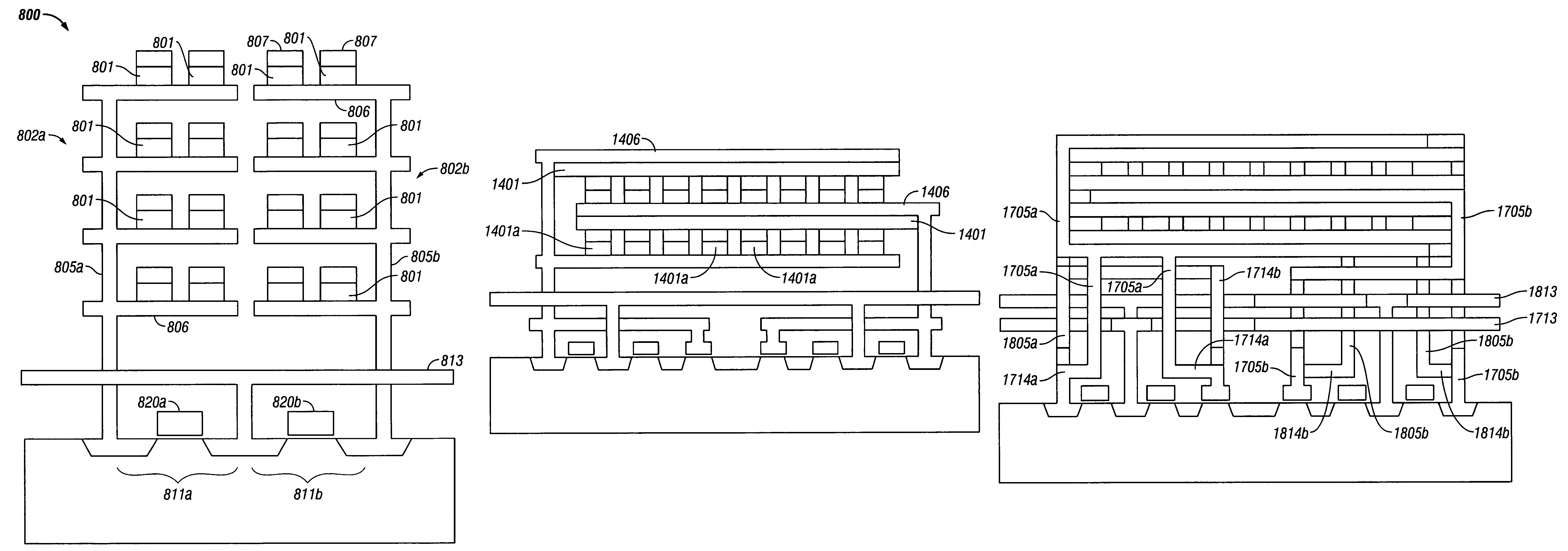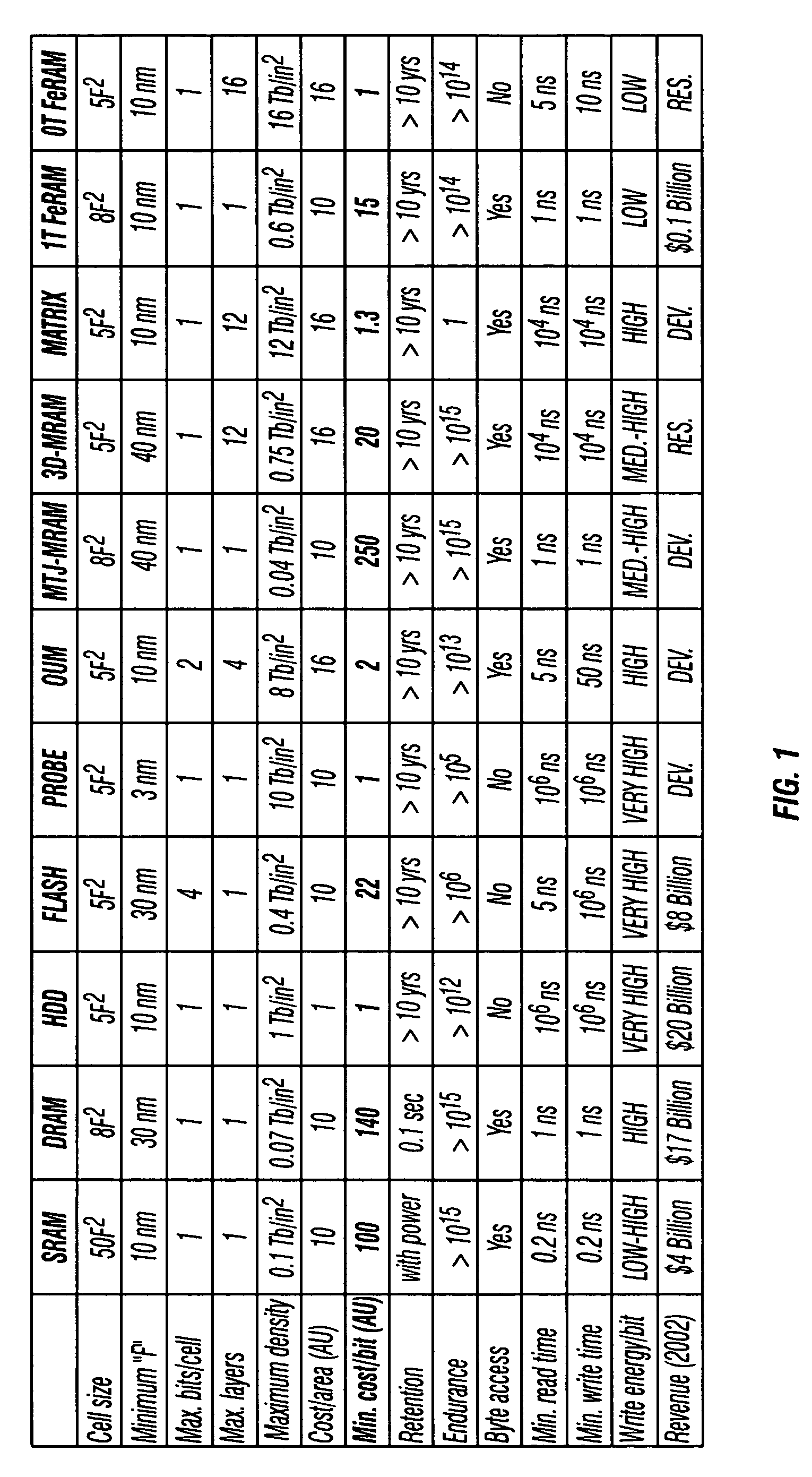Ultra low-cost solid-state memory
a solid-state memory, ultra-low-cost technology, applied in the direction of digital storage, semiconductor devices, instruments, etc., can solve the problems of hdds not being practicable to possess, hdds not being able to achieve multi-bit storage or 3-d integration, and four technologies, probe memories and matrix memories, are likely to have performance characteristics inferior to hdds, and achieve low-cost 3-d integration
- Summary
- Abstract
- Description
- Claims
- Application Information
AI Technical Summary
Benefits of technology
Problems solved by technology
Method used
Image
Examples
first embodiment
[0094]FIG. 3 shows a cross-sectional view of a first exemplary arrangement of a 3-D 0T-FeRAM memory 300 according to the present invention, as viewed along line B-B, which is shown in FIG. 4. Specifically, FIG. 3 is a cross-sectional view showing details of the end of two rows of trees. FIG. 4 shows a cross-sectional view of the first exemplary arrangement of 3-D 0T-FeRAM memory 300 as viewed along line A-A in FIG. 3. Specifically, FIG. 4 is a cross-sectional view of memory 300 showing details of plate lines through a row of trees.
[0095]Memory 300 includes a plurality of memory cells 301 that are each formed from a single ferroelectric capacitor and that are arranged in a tree-like structure, referred to herein as a “memory tree.” Not all memory cells 301 are indicated for simplification of FIGS. 3 and 4.
[0096]Two memory trees 302a and 302b are shown in FIG. 3. Memory trees 302a and 302b are arranged to be mirror images of each other so that a common voltage line 303 can be shared f...
second embodiment
[0119]FIG. 9 shows a cross-sectional view of an exemplary arrangement of a 3-D 0T-FeRAM memory 900 according to the present invention. In particular, FIG. 9 is a cross-sectional view showing details of the end of two rows of trees. Memory 900 includes a plurality of memory cells 901 that are each formed from a single ferroelectric capacitor and that are arranged in a memory-tree structure. Not all memory cells 901 are indicated for simplification of FIG. 9. Two memory trees 902a and 902b are arranged to be mirror images of each other so that a common voltage line 903 can be shared for gain transistors 904a and 904b. Gain transistors 904 and read transistors 911 are used for converting a voltage on a tree structure into a current on a bit line for improved detection sensitivity. Each memory tree 902 includes a trunk portion 905 that is formed from a conductive material, such as platinum, and a plurality of branch portions 906 that are also formed from a conductive material, such as p...
PUM
 Login to View More
Login to View More Abstract
Description
Claims
Application Information
 Login to View More
Login to View More - R&D
- Intellectual Property
- Life Sciences
- Materials
- Tech Scout
- Unparalleled Data Quality
- Higher Quality Content
- 60% Fewer Hallucinations
Browse by: Latest US Patents, China's latest patents, Technical Efficacy Thesaurus, Application Domain, Technology Topic, Popular Technical Reports.
© 2025 PatSnap. All rights reserved.Legal|Privacy policy|Modern Slavery Act Transparency Statement|Sitemap|About US| Contact US: help@patsnap.com



